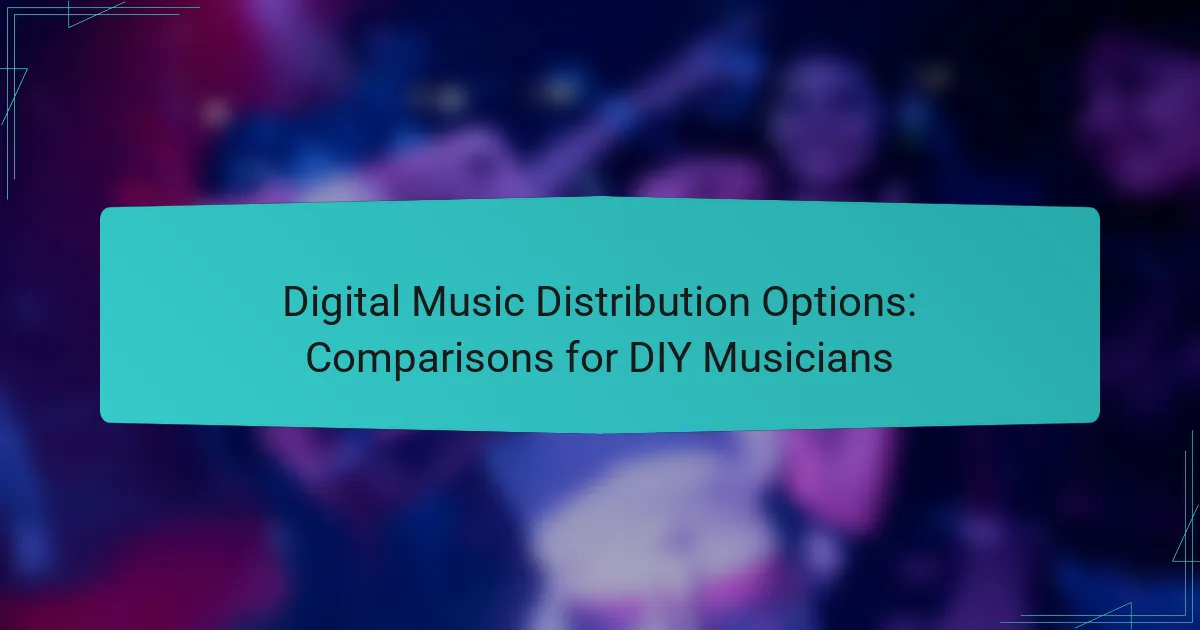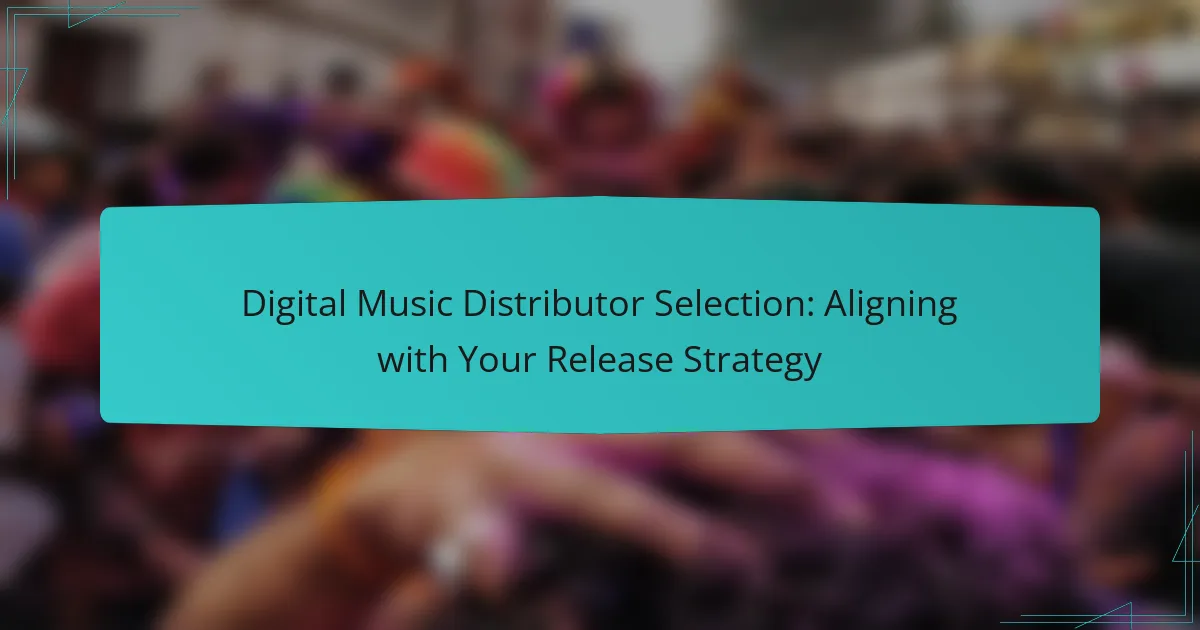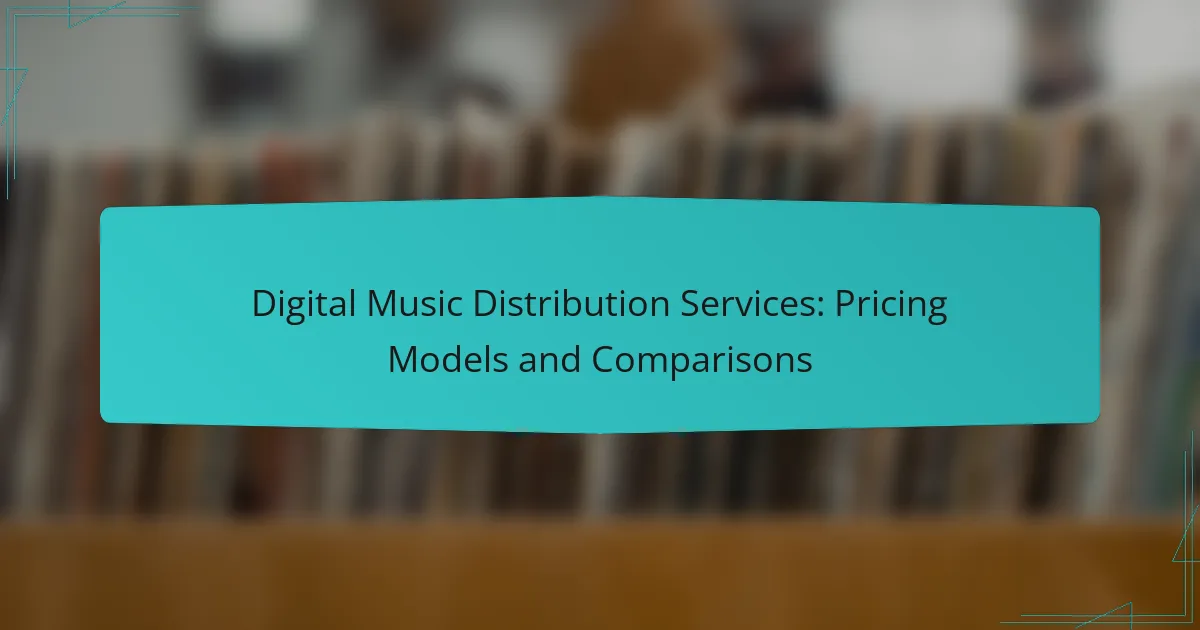For DIY musicians, choosing the right digital music distribution platform is essential for maximizing reach and revenue. With options like DistroKid, TuneCore, CD Baby, Amuse, and Landr, each offers unique features and pricing structures tailored to various needs. Understanding the differences in royalty rates, streaming availability, and customer support can help musicians make informed decisions that align with their financial goals and distribution strategies.
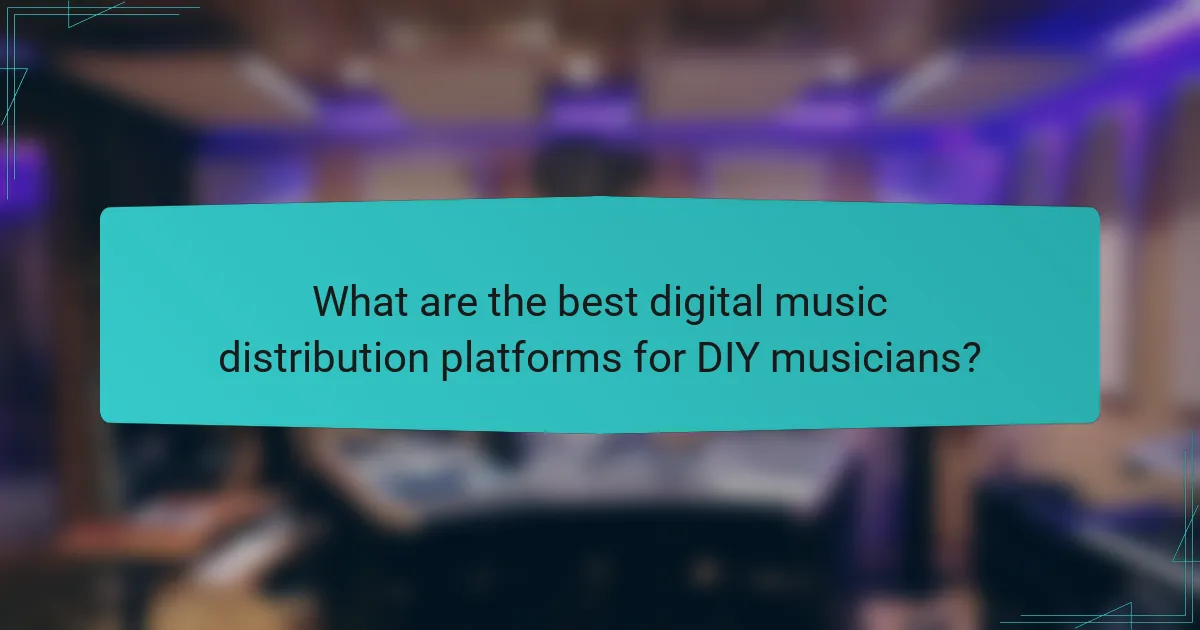
What are the best digital music distribution platforms for DIY musicians?
The best digital music distribution platforms for DIY musicians offer various features, pricing structures, and reach. Key options include DistroKid, TuneCore, CD Baby, Amuse, and Landr, each catering to different needs and budgets.
DistroKid
DistroKid is known for its straightforward pricing model, allowing musicians to upload unlimited tracks for a flat annual fee. This platform distributes music to major streaming services like Spotify and Apple Music, making it a popular choice for independent artists.
One key advantage of DistroKid is its speed; uploads typically go live within a few days. However, artists should be aware that DistroKid takes a percentage of earnings from services like YouTube monetization.
TuneCore
TuneCore operates on a pay-per-release model, charging fees for each album or single uploaded. This can be beneficial for artists who release music infrequently, as they only pay when they distribute new content.
While TuneCore offers extensive distribution options and detailed sales reports, the costs can add up if you release music regularly. Artists should weigh the benefits of comprehensive analytics against the ongoing fees.
CD Baby
CD Baby provides a one-time fee for each release, allowing artists to keep 91% of their streaming revenue. This platform is well-regarded for its customer service and additional services like physical distribution and sync licensing.
CD Baby also offers a range of promotional tools, which can help artists gain visibility. However, the upfront costs may be a consideration for those just starting out.
Amuse
Amuse offers a unique model by allowing artists to distribute music for free while also providing a premium subscription for additional features. This platform is ideal for emerging musicians looking to enter the market without upfront costs.
While the free version has limitations on the number of releases, it can be a great way to test the waters. Artists should consider upgrading if they want faster payouts and more extensive distribution options.
Landr
Landr combines music distribution with mastering services, making it a convenient choice for musicians who want a one-stop shop. The platform offers a subscription model that includes unlimited distribution and access to mastering tools.
Landr is particularly appealing for artists who value high-quality sound and want to streamline their production process. However, the subscription cost may not be ideal for those who only release music occasionally.
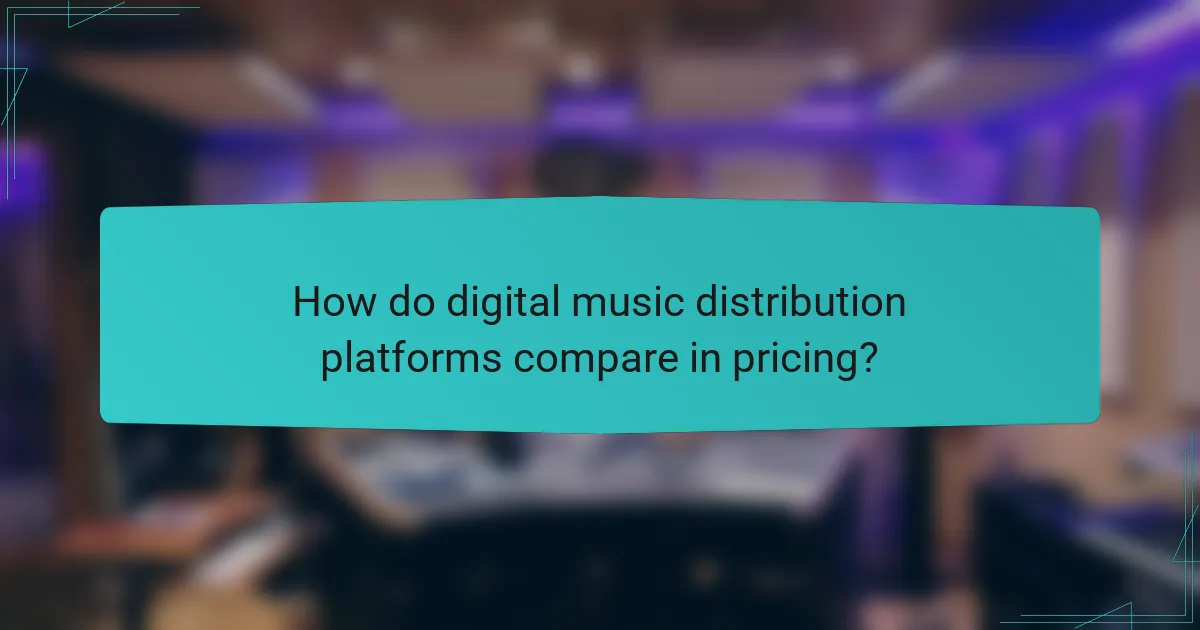
How do digital music distribution platforms compare in pricing?
Digital music distribution platforms vary significantly in pricing models, affecting how DIY musicians can manage their budgets. Understanding these differences is crucial for selecting a service that aligns with your financial goals and distribution needs.
DistroKid pricing model
DistroKid operates on an annual subscription model, allowing artists to upload unlimited music for a flat fee, typically around $20 to $50 per year. This model is advantageous for musicians who release multiple tracks or albums annually, as it eliminates per-release fees.
One key aspect to consider is that DistroKid takes no commission on sales, meaning you retain 100% of your earnings. However, additional services, such as YouTube monetization or Shazam integration, may incur extra costs.
TuneCore pricing structure
TuneCore uses a pay-per-release pricing structure, charging fees for each single or album uploaded. Prices generally range from $10 to $50 for singles and $30 to $100 for albums, depending on the distribution options selected.
While TuneCore allows for a la carte services, such as publishing administration, these can add up quickly. Artists should weigh the upfront costs against potential earnings, especially if they plan to release music sporadically.
CD Baby fees
CD Baby charges a one-time fee per release, typically between $9.95 and $49 for singles and albums, respectively. Unlike DistroKid, CD Baby takes a commission from sales, usually around 9% of digital distribution earnings.
This model can be beneficial for musicians who prefer a lower upfront cost but may be less favorable for those who plan to release a high volume of music. Additionally, CD Baby offers various services like physical distribution and sync licensing, which can further influence overall costs.
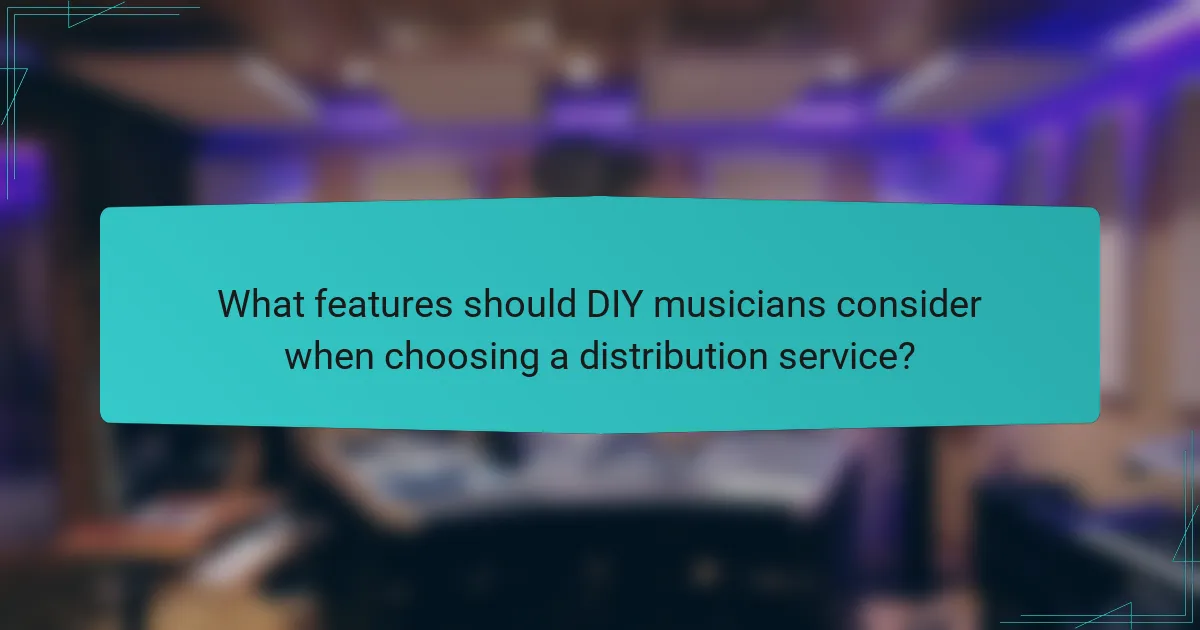
What features should DIY musicians consider when choosing a distribution service?
DIY musicians should focus on key features such as royalty rates, streaming platform availability, and customer support options when selecting a distribution service. These factors can significantly impact earnings, reach, and overall experience in managing music distribution.
Royalty rates
Royalty rates determine how much musicians earn from their music sales and streams. Most distribution services take a percentage of the revenue, typically ranging from 10% to 30%. It’s essential to compare these rates and consider whether the service offers a flat fee option, which can be more cost-effective for artists with a larger catalog.
Additionally, some platforms may offer different rates for various services, such as digital downloads versus streaming. Understanding these nuances can help musicians maximize their earnings.
Streaming platform availability
Not all distribution services provide access to the same streaming platforms. Popular services like Spotify, Apple Music, and Amazon Music are essential for reaching a broad audience. Musicians should ensure their chosen distributor covers the platforms most relevant to their target listeners.
Some services may also offer additional platforms, such as niche or regional services, which can be beneficial for specific genres or local markets. Evaluating the full list of available platforms can help artists make informed decisions about their distribution strategy.
Customer support options
Effective customer support is crucial for DIY musicians navigating distribution challenges. Look for services that offer multiple support channels, such as email, chat, or phone support. Quick response times and knowledgeable representatives can make a significant difference when issues arise.
Additionally, consider whether the service provides resources like FAQs, tutorials, or community forums. These can be valuable for troubleshooting common problems and enhancing the overall user experience.
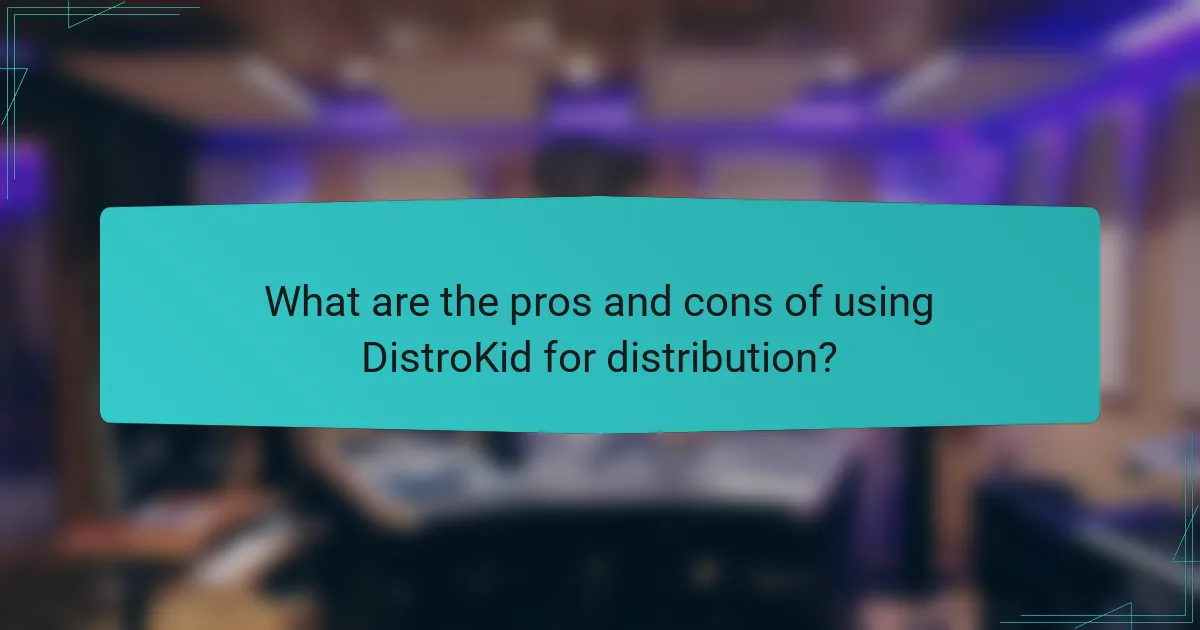
What are the pros and cons of using DistroKid for distribution?
DistroKid offers a straightforward and efficient way for musicians to distribute their music across various platforms. Its main advantages include unlimited uploads and rapid distribution, while the annual fee structure may be a consideration for some artists.
Unlimited uploads
DistroKid allows musicians to upload an unlimited number of songs and albums for a single annual fee. This is particularly beneficial for DIY artists who are consistently creating new music and want to release it without worrying about additional costs for each upload.
However, while unlimited uploads can be advantageous, it’s essential to maintain quality over quantity. Artists should ensure that each release meets their standards to effectively engage their audience.
Fast distribution
One of the standout features of DistroKid is its fast distribution process, often getting music onto platforms like Spotify, Apple Music, and Amazon Music within a few days. This speed can be crucial for artists looking to capitalize on trends or promote upcoming events.
Despite the quick turnaround, artists should plan their releases strategically. Rushing a release without proper promotion or preparation can lead to missed opportunities for audience engagement.
Annual fee structure
DistroKid operates on an annual subscription model, which means artists pay a set fee each year to access its services. This fee typically ranges from around $20 to $50, depending on the plan chosen, allowing for unlimited uploads during that period.
While the annual fee can be economical for prolific musicians, those who release music less frequently might find it less appealing. Artists should evaluate their release schedule to determine if the subscription cost aligns with their distribution needs.
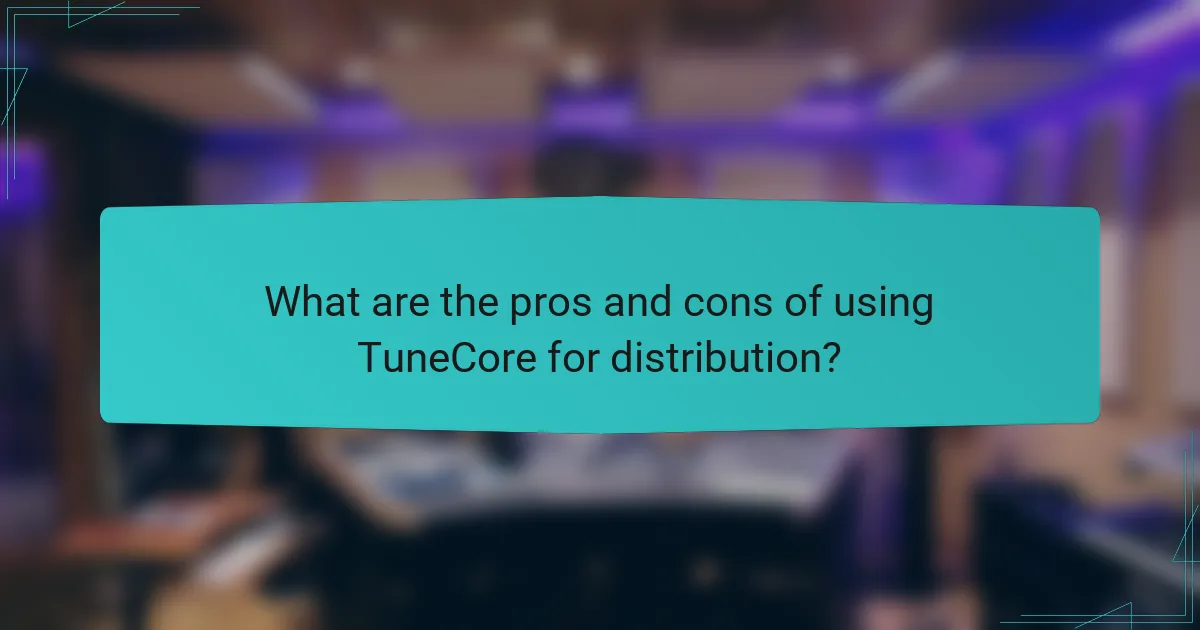
What are the pros and cons of using TuneCore for distribution?
TuneCore offers a straightforward way for independent musicians to distribute their music across various platforms, but it comes with both advantages and disadvantages. Understanding these can help artists make informed decisions about their distribution strategy.
Pros of TuneCore
TuneCore provides musicians with extensive distribution options, allowing them to reach major platforms like Spotify, Apple Music, and Amazon Music. The service is user-friendly, enabling artists to upload their music quickly and efficiently without needing technical expertise.
Another significant advantage is that TuneCore allows artists to retain 100% of their royalties, which is particularly beneficial for those looking to maximize their earnings. Additionally, they offer a variety of tools for marketing and promotion, helping artists gain visibility in a crowded market.
Cons of TuneCore
One of the main drawbacks of using TuneCore is the upfront cost associated with distribution. Artists must pay a fee for each release, which can add up, especially for those with multiple singles or albums. This model may not be ideal for all musicians, particularly those just starting out.
Furthermore, TuneCore does not offer a subscription model, meaning that artists need to pay for each release individually. This can lead to financial strain if an artist plans to release music frequently. Additionally, while TuneCore provides a wide distribution network, some artists may find that their music does not receive as much promotion as they would like.
